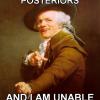Goodwood in the early nineteen sixties in the timekeepers box.
The timekeepers are sitting in a row with their assistants. Mostly men.
Typically a timekeeper has an array of watches.
He also has a comptometer, a calculating device with keypad and a crank handle.
(In the 'real' world most comptometer operators were women.)
At the end of each race he would vigorously crank the handle.
What function did this machine perform? Total race time?
The comptometer was produced by Felt & Tarrant Manufacturing Company of Chicago, Illinois.
Inventor: Dorr Eugene Felt (1862-1930).
Developed 1884. First model offered for sale 1887.
From 1961 Sumlock-Comptometer of Uxbridge, Middlesex. Factories at Uxbridge, Portsmouth.
Acquired by Rockwell 1973.
Although a brand name I think the word comptometer may have acquired a generic meaning, as in hoover, biro or xerox.
Did Burroughs Adding Machines also play a part?
All this suggests that the method of timing races hadn't changed significantly since the 1920s.
The only early reference to a comptometer I can find derives from Motor Sport, November 1924, Page 226:
Sutton Coldfield & North Birmingham Automobile Club.
"All above calculations performed and checked by Comptometer Calculating Machine."
RGDS RLT
Edited by Rupertlt1, 03 April 2025 - 05:54.













